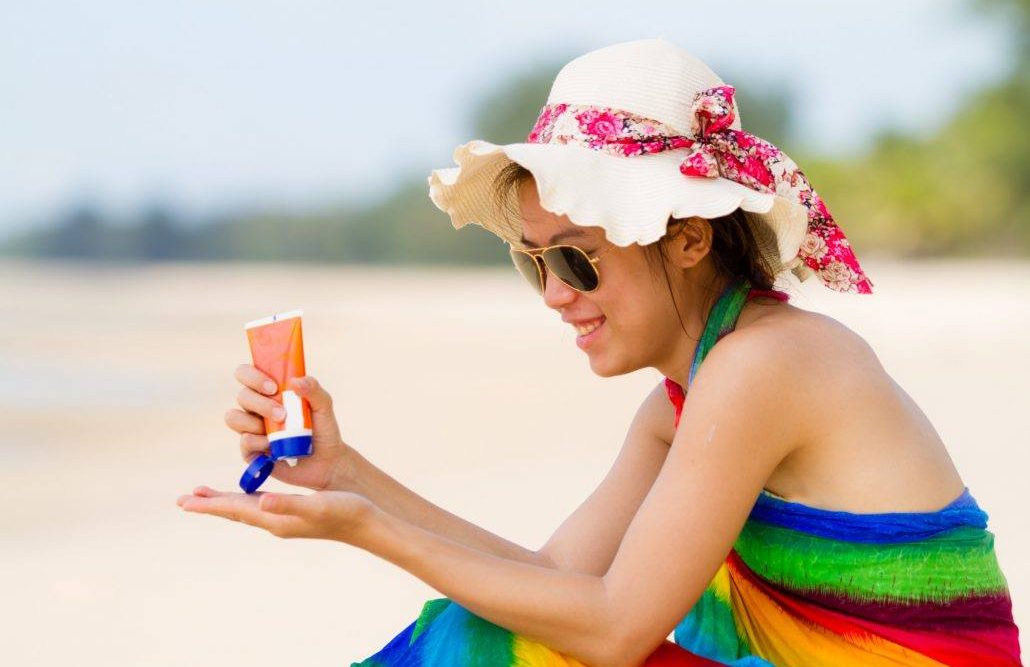RISKY BUSINESS – PROTECTING YOUR SKIN FROM THE SUN
13/07/2018

Warm weather and longer days have many people spending more time outside. But you can forget an important step to truly enjoy this precious time outside—protecting your skin from the sun. Practicing healthy sun exposure can keep your skin happy, and is a habit that will serve you well into the future.
Sunburns lead to blistered and peeling skin. They can also create more serious health problems. But there are many ways to protect you and your little ones from the sun. The first step is understanding how and why you need to protect your skin.
UV Radiation Overview
Much can be gained from spending time outside on a sunny day, but there are many risks associated with sun exposure. The sun’s rays allow us to manufacture vitamin D and can lift our spirits after a long period of cloudy weather.
However, ultraviolet (UV) radiation is the culprit behind painful sunburns and peeling skin. UV radiation is known to cause damage to oxygen-carrying cells in the body and to DNA. Understanding how UV radiation can be dangerous for your health starts with an explanation of the two types of dangerous UV rays.
Both UVA and UVB radiation penetrate the skin, but UVB is more harmful than UVA radiation. UVA and UVB rays are differentiated by their wavelengths, with UVB being the shorter of the two. UV radiation causes damage to DNA, which leads to genetic mutation.
Sun Exposure Behavior
A 2001 study in the journal Preventative Medicine found that less than one-third of youths in the US practiced regular sun-protection behavior. Sun protection considered in this study included:
- wearing long pants
- wearing sunglasses
- staying in the shade
- wearing sunscreen.
While these results may be dated, it is clear that children between the ages of 11 and 18 struggle to protect themselves effectively from prolonged exposure to the sun.
This extended time in the sun without proper protection leads to painful sunburns and blisters, and the increased risk of DNA damage from UV radiation. Children need to learn safe sun exposure early and practice it often. It can be difficult to understand when you need to wear a hat or stay in the shade. That’s why sunscreen should be used daily to safe-guard children and adults from the sun.
Parental Role Modeling
Ample evidence suggests that setting a good example for children can increase their likelihood of practicing healthy sun exposure. Parents who practice frequent sun protection are less likely to get sunburnt while outside and are more likely to have children who also practice frequent sun protection.
A study in the Journal of Pediatrics in 2001, used survey data to find that nearly half of all parents and children in the US were sunburnt during the previous summer. With sunburns occurring on such a large scale, it is imperative that parents teach their children through example how to best protect their skin from the sun.
Sunscreen Application
Wearing sunscreen is by far one of the most popular and effective methods of protecting your skin from the sun. Sunscreen is virtually non-restrictive, so wearing sunscreen won’t keep you from being active while outside.
Sunscreen’s efficacy against UV radiation is measured by a sun protection factor (SPF) index. With SPF, the higher the number, the more sun protection the sunscreen offers.
But these SPF indices can be misleading. They imply that one application of a sunscreen with high SPF will keep you from being sunburnt. This is not the case.
Sunscreen must be applied early, and often, to maximize its protective effects. Many people don’t know how much sunscreen they need to apply to be protected from the sun. Clinical and Experimental Dermatology published the results of a study in 2012 that suggest most people who use sunscreen don’t apply nearly enough to be protected.
To reach the SPF coverage displayed on a bottle, the recommended two mg/cm3 (two milligrams per cubic centimeter) must be applied all over the exposed skin. This exact volume is hard to measure, so the researchers suggest a double application of sunscreen is best before playing outside. By applying a double layer of sunscreen and reapplying every couple of hours you can be confident your skin will be prepared for a day in the sun.
Conclusion
They call it fun in the sun, but in reality, playing outside without proper sun protection can be dangerous. Sun protection can take many forms—from sunscreen to wearing long-sleeved shirts and hats to cover sensitive skin from UV radiation. All of these methods can be helpful in preventing sunburn. But they are most effective when practiced correctly and used often. Practice healthy sun exposure by using defensive sun-protection methods today, and safely enjoy time outside for years to come.
References
- Oriordan, David L., Alan C. Geller, Daniel R. Brooks, and Donald R. Miller. “Sunburn reduction through parental role modeling and sunscreen vigilance.” The Journal of Pediatrics. 149.1 (2003): 67-72.
- Teramura, T., M. Mizuno, H. Asano, N. Naito, K. Arakane, and Y. Miyachi. “Relationship between sun-protection factor and application thickness in high-performance sunscreen: double application of sunscreen is recommended.” Clinical and Experimental Dermatology 37.8 (2012): 904-08.
- De Gruijl, Frank R. “Photocarcinogenesis” Methods in Enzymology. Vol. 319. N. p.: Academic Press, 2000. 359-66.
- Cokkinides, Vilma E., Kourtney Johnston-Davis, Martin Weinstock, Mary C. Oconnell, William Kalsbeek, Michael J. Thun, and Phyllis A. Wingo. “Sun exposure and sun-protection behaviors and attitudes among US youth, 11 to 18 years of age.” Preventative Medicine 33.3 (2001): 141-51.
- Hall, H. Irene, Daniel S. May, Robert A. Lew, Howard K. Koh. “Sun protection behaviors of the US white population.” Preventative Medicine 26.4 (1997): 401-07.
- “Skin Cancer Foundation.” Sun protection for the whole family at the pool or at the beach — skincancer.org. The Skin Cancer Foundation. 09 Aug. 2016.





